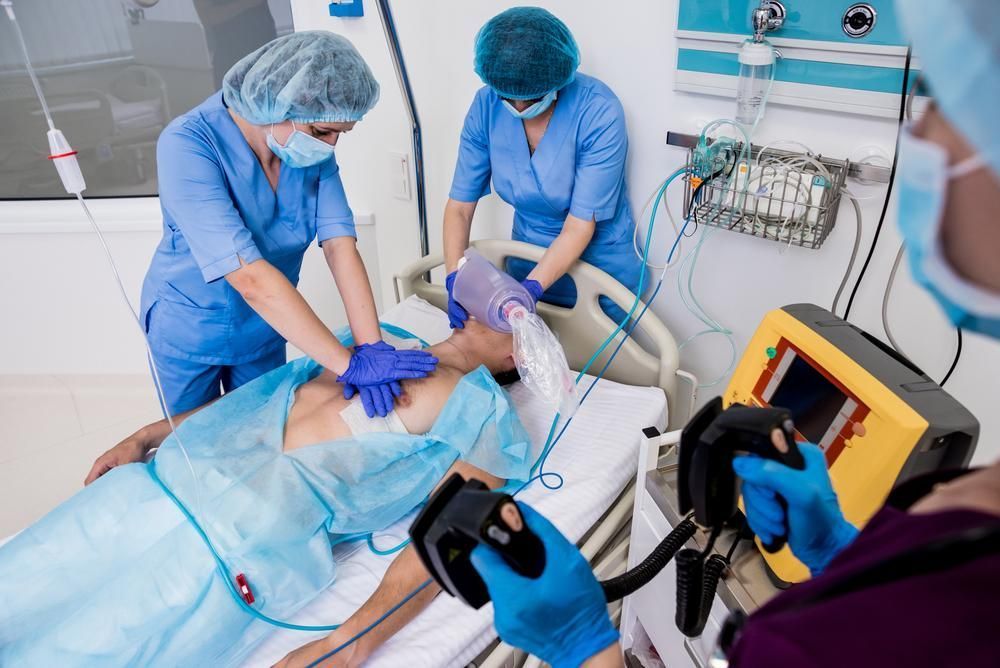The maximization of healthcare simulation to train high-performance healthcare teams is the pinnacle of all clinical simulation experiences. For those involved in education via clinical simulation, the larger scale multidisciplinary team clinical simulation scenarios highlight involvement in clinical simulation. Immersive, realistic, high end clinical simulation-based education is where the clinical practice of clinicians, nurses, and other staff involved is reflected on and altered often for the better of career duration. Clinical simulation scenarios for high-performance teams are the most worthwhile yet most resource dependent style of clinical simulation. This article by Erin Carn-Bennett, RN, MSN, will explore how to maximize the experience of clinical simulation scenarios for high-performance teams.
Focus on Fidelity to Increase Immersion
Fidelity is an incredibly important element of healthcare simulation, but when high-performance teams are involved the importance of fidelity becomes even more critical. Fidelity is essential in this environment as fidelity is what will assist team members to become more immersed in the clinical simulation experience. Immersion into the clinical simulation will mean that participants in the clinical simulation are more likely to absorb more knowledge and reflect more on the experience for years after the scenario.
Knowledge of the high-performance team, the clinical environment, and the exposure to the types of clinical cases for the high-performance team is worthwhile to know in the planning phase for clinical simulation scenarios. This information will allow clinical simulation faculty to gauge what scenario subjects best suit the team. Ideally, a case with a poor outcome for the local team should not be simulated too soon after the adverse event. This should be well considered so that no team members are re-traumatized in the clinical simulation.
Plan Well to Enable Successful Outcomes
Ensure management is aware and there is buy-in to the clinical simulation-based education. Protected time for staff to attend is of the utmost importance for participants to focus and engage fully in the clinical simulation-based education. Plan for enough planning time to consider all aspects of the clinical simulation scenario for high-performance teams.
An extensive planning phase should occur before the clinical simulation scenario occurs. An appropriate scenario should be selected with the right amount of complexity written into the scenario to challenge the clinical simulation participants. The aim is to place clinical simulation participants on the steep edge of their learning curve but not too far over the edge, which can be a difficult balance to get right, even for the most experienced clinical simulation faculty team members. Consideration should be given to what participants will be invited to the clinical simulation. Ensure that the correct components of multidisciplinary team members are present to attend to the patient in real life.
Participant Psychological Safety Must Always be a Priority
Psychological safety must be at the heart of and paramount in clinical simulation for high-performance teams. These teams’ time and trust are incredibly precious and should not be monopolized. Transparency should be openly communicated around the effort to get psychological safety for the team right. Any errors by the clinical simulation faculty that occur within the clinical simulation scenario should be held accountable to strengthen psychological safety.
Consideration must be made to balance the proposed clinical simulation course timetable when pitched to high-performance teams. For example, there should be an appropriate amount of time spent on introductions. Introductions allow clinical simulation participants to settle into the clinical simulation experience and feel more at ease around the clinical simulation faculty.
After introductions to team-based activities or didactic presentations, there needs to be a balance. Clinical simulation participants don’t want to be disengaged listening to a PowerPoint presentation when there could be clinical simulation scenarios to be involved in instead. The balance of time spent in clinical simulation and debriefing should also be considered.
View the LEARN CE/CME Platform Webinar Beyond the Checklist: What Healthcare Simulation Can Learn from Aviation Safety and Teamwork to learn more!
Balance All of the Components to Set up For Success
The participants in the clinical simulation scenario want to be immersed and settled into the experience to feel that there has been the opportunity to provide enough care for the patient. As faculty there needs to be a balance between enough time for the participants to experience the scenario and then to debrief aspects that occurred in the scenario. If the scenario is shortened the participants may become frustrated with not having enough time in the simulation. This can cause these learners develop negative perceptions about the clinical simulation program. If there is the ability to flex the schedule for more time in an area of the course, then consider extension of the debrief.
To increase the realism of the clinical simulations, moulage should be prioritized and effort put into the clinical simulation for high-performance teams. Details such as blood that will ooze from gunshot wounds, blood that comes out of a chest drain, and other high end moulage should be explored and also invested into. There are numerous resources within the www.healthysimulation.com community for moulage and a number of groups and communities on social media that are worthwhile to access to allow for successful moulage. Excellent moulage can assist with buy-in from clinical simulation participants and enhances realism, which is important to high-performance teams in clinical simulation.
Consideration of the right debriefers in the clinical simulation is of great importance. Varying levels of experience and expertise in the debrief are okay so long as support from more senior debriefers is provided. A refresher of skills in the chosen debrief methodology prior to the clinical simulation course may be helpful for those who have not debriefed in a while. Clear roles and a plan for the debrief centered on the clinical simulation participants’ priorities will mean there is more likelihood of a successful debrief.
This article has covered content on several factors when planning a clinical simulation course or scenario specifically for high-performance teams. Fully immersive, multidisciplinary healthcare team-based clinical simulation scenarios have a number of factors to consider and ensure that the pitch is correct. As clinical simulation faculty, consideration of the factors in this article will assist to set up a powerful scenario that can have a large scale impact for learners.








